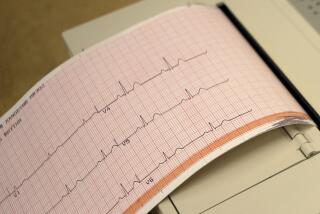Ambulances are so 2016. After a cardiac arrest, the fastest way to send help is on a flying drone
The best medicine for a person going into sudden cardiac arrest is an electric shock. That jolt temporarily stops the heart, along with its rapid or erratic beat. When the heart starts itself up again, it can revert to its normal rhythm and resume pumping blood to the brain and the rest of the body.
The sooner this happens, the better. When a patient is shocked within one minute of collapse, the chance of survival is nearly 90%. But if it takes 10 minutes to administer a shock, the odds of survival fall below 5%.
If a victim is are lucky, he’ll collapse in a mall, airport, school or other public venue that’s outfitted with an automated external defibrillator, or AED. These user-friendly machines can assess the cause of cardiac arrest, determine whether a shock is appropriate and deliver it if necessary.
But if a victims is unlucky, he’ll have to wait for an AED to come to him. Usually, this means calling for an ambulance. But in the not-too-distant future, the ambulance could be replaced by a flying drone.
If that sounds ridiculously futuristic, head over to the Karolinska Institute in Stockholm, Sweden. That’s where a team of doctors and nurses built a bright yellow drone capable of delivering an AED to a patient in need.
The drone in question weighs about 12.5 pounds and uses eight rotors to achieve speeds of up to 47 miles per hour. Once a pilot programs its route and destination, the drone uses a GPS system, autopilot software and a high-definition camera to get there. Fluorescent paint and LED lights help make it easy for people to find.
Members of the research team had previously used geographic information system data to estimate whether there would be any advantage to putting AEDs on drones. Their models suggested that a drone would arrive faster than an ambulance 93% of the time, saving patients an average of 19 minutes.
Now they’ve gone a step further and dispatched an actual drone from a fire station about 45 minutes north of Stockholm to 18 locations where people suffered actual cardiac arrests away from a hospital between 2006 and 2014. The times for the test flights were compared with the ambulance times recorded in the Swedish Registry for Cardiopulmonary Resuscitation.
As predicted, the drones beat the ambulances handily, according to a report published Tuesday in the Journal of the American Medical Assn. In all 18 cases, the drone arrived more quickly than the ambulance had.
The time it took to get the drone dispatched, launched and to the site of a cardiac arrest ranged from a low of 1 minute, 15 seconds to a high of 11 minutes, 51 seconds. Ambulances had taken between 5 minutes and 38 minutes to respond to calls at the same locations.
For the drones, the median time from dispatch to arrival was 5 minutes, 21 seconds. For ambulances, it was 22 minutes. Thus, the median amount of time saved by drones was 16 minutes, 39 seconds.
“Saving 16 minutes is likely to be clinically important,” the study authors wrote.
To be fair, the drones had a few advantages, such as the fact that all test flights occurred on days with good weather. Also, road conditions may have improved since the ambulances made their runs, sometimes more than a decade ago. If so, the advantage of the drones might not be as great as it initially appears.
Still, the results are good enough for researchers to continue with further flight tests and to see if it would be feasible for drones to be included in the emergency medical services system, the study authors wrote.
The American Heart Assn. estimates that in 2016, more than 350,000 people in the U.S. went into cardiac arrest away from a hospital; only 12% of them survived long enough to be treated in a hospital and released. With so much room for improvement, drones have the potential to make a real difference.
Follow me on Twitter @LATkarenkaplan and “like” Los Angeles Times Science & Health on Facebook.
MORE IN SCIENCE
Scientists use meteorites to show that Jupiter is almost as old as the solar system
Microcephaly or other birth defects seen in 5% of pregnancies affected by Zika, CDC says
These 12 Americans had the right stuff to be picked for NASA’s new class of astronaut trainees







